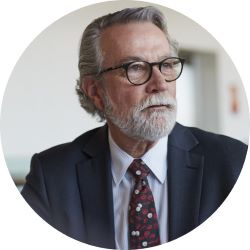Don’t have an account?
Select the donation type you’d like to make
Why everything old is new again: can we use an old method to treat COVID19?
One of today’s potential treatments for COVID-19 has its origins in the 19th century, when Nobel Prize winner Emil Von Behring discovered that serum from infected animals offered protection from disease.
Based on this discovery he developed a treatment for diphtheria based on immune serum from horse blood.
Since then serum or plasma from recovered patients (known as convalescent plasma) has been used to treat a range of diseases. Notably, it was used in an attempt to control the Spanish Flu pandemic of 1918-1920-and may have reduced the mortality from that disease. More recently, this therapy has been found to be safe and possibly effective against SARS and MERS.
Modern methods of plasma collection (apheresis) mean that today we are able to safely collect more plasma from donors than was historically possible. In Australia plasma donations can be given each fortnight, however for special circumstances, such as the collection of convalescent plasma, a donor can donate as often as once a week with medical officer approval, since apheresis does not deplete the body’s iron stores.
How does it work?
Plasma is the yellow, liquid part of blood, and it makes up about 55 % of your blood volume. It carries a range of substances, including antibodies, which are protein molecules made by your immune system that help it recognise and destroy infections.
When someone recovers from an infectious disease, their plasma usually contains antibodies that help fight that disease. The antibodies bind specifically to the virus, inactivating it and marking it for destruction. A person’s immune system “remembers” how to make antibodies like this them for some time, and we say they have “active immunity”.
By collecting plasma from a recovered patient (we call this “convalescent plasma”) and transfusing it to a sick patient, doctors intend that the antibodies from the transfused plasma will help the body clear the virus, helping the patient recover. When they receive this treatment, the patient is using antibodies made by someone else, and we call it “passive immunity”.
Passive immunity doesn’t last a long time, so a patient may need a number of transfusions of convalescent plasma to get them on the road to recovery.
For many familiar diseases, such as measles, long lasting immunity means that recovered patients can fight off the disease next time they see it, and also that we can collect plasma many times from them, which can potentially help many others. Because COVID-19 is a new disease, scientists are still working on tracking how a person’s immune system responds to the disease over time.
Will it definitely help COVID19 or is it still purely experimental?
There are some early case reports from China that convalescent plasma has helped patients with severe disease. These trials are encouraging, but they are small (5 to 10 patients) and don’t meet the “gold standard” for clinical trials. The treatment is therefore not yet proven for COVID 19 and is still experimental.
Around the world, a number of clinical trials of convalescent plasma for COVID 19 are in progress. In the US an expanded access program is growing rapidly, with over 7700 patients enrolled.
In an Australian first, Australian Red Cross Lifeblood has started collecting plasma from Australian donors who have recovered from COVID 19 . The plasma will be used to support two clinical trials, either as fresh frozen plasma or COVID-19 Immunoglobulin, a medication being produced in Australia by CSL Behring. The trials are:
- The Australasian COVID-19 Trial (ASCOT)
- The Randomised, Embedded, Multifactorial Adaptive Platform Trial for Community-Acquired Pneumonia (REMAP-CAP) trial, an international trial spanning 54 sites across Australia and will include up to 2000 participants.
The plasma we collect will be able to be frozen, and has a shelf-life of up to two years, which will help us develop a stockpile to use if the treatment is proven successful.
Are there side effects?
The side effects from a transfusion of convalescent plasma in COVID 19 are expected to be similar to those for a regular plasma transfusion. Previous studies of uses of convalescent plasma have shown that the treatment is safe.
What other conditions is plasma therapy currently used for?
Plasma collected by blood operators such as Lifeblood is currently used for treating burns patients, support people with immune deficiencies, and for making more than 18 treatments . Like convalescent plasma, some of these treatments harness passive immunity to help people who have been exposed to tetanus, measles or chicken pox.
Lifeblood began collecting plasma from recovered donors from Monday, May 11.
Recovered patients must have a laboratory-confirmed case of COVID-19 and meet Lifeblood’s current eligibility criteria, including being recovered from COVID-19 symptoms for at least 28 days.
If you have recovered from a confirmed diagnosis of COVID-19 and believe you may be eligible to donate, please call 13 14 95 and mention that you want to donate convalescent plasma or visit Lifeblood.


